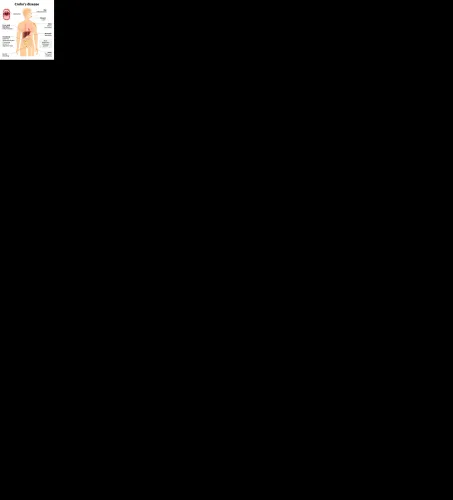Gastroenterology Coding Alert
Get the Pulse of CPT® 2017 Final Updates for Gastroenterology
Be ready for removal of conscious sedation from 43235, 43260, and many more changes…
The AMA has released the final version of CPT® 2017, and you have a lot to learn before the updates take effect on Jan. 1. With an overhaul of 150 gastroenterology codes on the horizon, you’ll need to start your preparations right away.
Expect to Start Reporting Moderate Sedation Jan. 1
The biggest overall change you can expect to see in CPT® 2017 is the removal of conscious (moderate) sedation from hundreds of codes “This will have a big impact on physicians who do scopes frequently,” says Lisa Center, CPC, Physician Practice Manager, Via Christi Hospital Pittsburg, Inc. Pittsburg, KS.
Remember: In CPT® 2016, more than 400 codes, listed in CPT® Appendix G, have the circle-with-a-center-dot symbol indicating that you should not report sedation separately. That’s because the marked code includes moderate sedation administered by the same provider performing the procedure.
However, with a single sweep, all 400 codes will no longer include moderate sedation services. That means you will have to report moderate sedation in addition to the basic procedure code in 2017. Prepare now so your practice is ready to properly document and code for moderate sedation starting on Jan. 1.
There is a great “concern over removal of moderate sedation from endoscopy procedures because of reduction in reimbursement,” says Catherine Brink, BS, CMM, CPC, CMSCS, CPOM, president, Healthcare Resource Management, Inc. Spring Lake, NJ.
How the change came about: “The landscape for ambulatory endoscopy procedures has changed over the past decade,” says Michael Weinstein, MD, former representative of the AMA’s CPT® Advisory Panel. “Gastroenterologists have recognized benefits in using Propofol sedation administered by an anesthetist compared to the benzodiazepine and narcotic combination sedation method administered by the gastroenterologist-nurse team. More than half of ambulatory procedures are now performed with Propofol sedation and the change in the coding rules reflects the change in practice. The anesthetist is permitted to submit a claim for sedation administration services but the prior procedure definition prevents the gastroenterologist from submitting a separate claim for the sedation administration.”
Tip: The 2017 Medicare Physician Fee Schedule proposed rule indicates Medicare will be reducing RVUs for Appendix G codes because moderate sedation reimbursement will no longer be included in those codes (www.gpo.gov/fdsys/pkg/FR-2016-07-15/pdf/2016-16097.pdf).
Remove Conscious Sedation from Endoscopy Codes
Endoscopy codes that have been revised to remove the conscious sedation symbol include:
Note These Changes for ECRP, Proctosigmoidoscopy and More
Six codes for reporting Endoscopic Retrograde Cholangiopancreatography (ERCP) 43260- 43265 (Endoscopic retrograde cholangiopancreatography [ERCP];…) as well as the proctosigmoidoscopy codes 45393 to 45338 will also undergo removal of moderate sedation in 2017.
Plus: Expect removal of conscious sedation from 49405 to 49407 (Image-guided fluid collection drainage by catheter [eg, abscess, hematoma, seroma, lymphocele, cyst]…) and the following procedure codes relating to biliary duct.
Final takeaway: “The change in coding for these procedures is associated with a planned small change in valuation of the total physician work,” says Weinstein. “Removal of the included work of conscious sedation will lower the total procedure RVUs by 0.1 units. This will result in decreased payments of about $4 for the procedure code. If the gastroenterologist administers the sedation then he will submit the new 2017 moderate sedation code along with the procedure code.”
Editor’s note: Stay tuned to learn more on how to survive this change.
Related Articles
Gastroenterology Coding Alert
- CPT® 2017 Update:
Get the Pulse of CPT® 2017 Final Updates for Gastroenterology
Be ready for removal of conscious sedation from 43235, 43260, and many more changes… The [...] - ICD-10 Update:
Master the New ICD-10 Codes for Intestinal Infarcts, Hepatic Failure and Pancreatitis
New options for pancreatitis let you code based on presence of necrosis October is here [...] - MACRA Update:
Make the Most of the Four "Pick Your Own Pace Options" From CMS
Start work now on colonoscopy and GERD, says AGA. Washing away all the speculations about [...] - You Be the Coder:
Know How to Code For Incomplete Colonoscopy
Question: A provider performs diagnostic colonoscopy. During the procedure, he is able to progress the colonoscope [...] - Reader Question:
Explore Coding Options in Endoscopic Ultrasound (EUS) Along With FNA
Question: The provider performs endoscopic ultrasound with optical endomicroscopy (OE) and fine needle aspiration of a [...] - Reader Question:
Tread Carefully With Sclerotherapy for Esophageal Varices
Question: The doctor performs sclerotherapy for esophageal varices. How do we report this? Utah Subscriber Answer: In [...] - Reader Question:
Hit the Right Code for EGDs with Dilation and Biopsy
Question: Our surgeon performed an EGD that required dilation for access. Upon examination of the duodenum, [...] - Reader Question:
Explore Your Coding Options for Gastroesophageal Reflux Test
Question: A fifty year old male patient, complaining of heart burn, is diagnosed as having gastro-esophageal [...] - Reader Question:
Pick the Right Code for Transoral Esophagoscopy with Specimen Collection
Question: The provider views the esophagus by means of rigid endoscope through the mouth. He also [...]




